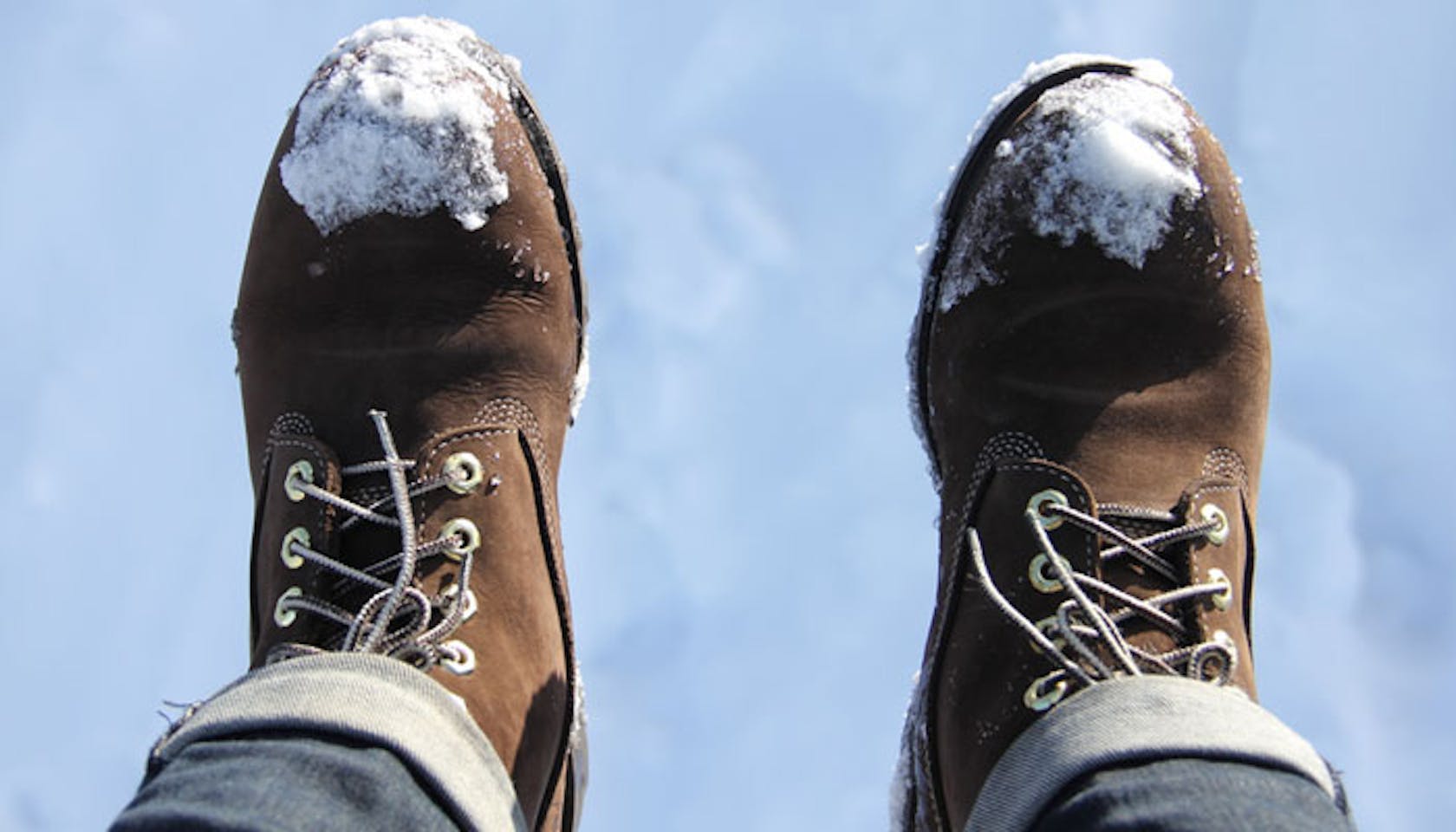Outdoors · January 5, 2015
A Winter Survival Guide for Your Shoes

Before the Storm: Treat Your Shoes
Were not harboring any delusions here: A shoe is either built to be waterproof or its notand you definitely shouldnt be sporting leather or suede during a full-blown snowstorm. But its still smart to treat those everyday shoes with wax or a waterproofing compound, which will shield them in the event of spontaneous flurries.
You can also upgrade the soles of your boots and sneakers for the slippery season. An easily affixed traction device will give them extra stability on snow and ice.
During the Storm: Outfit Your Feet
Winter precipitation is far from a one shoe fits all situation. If hunkering down indoors isnt an option, make sure youre properly suited up for the conditions.
Watery slush and melting snow: As far as your shoes are concerned, stepping in a slush puddle is akin to going fly-fishing. We recommend a tall, heavy-duty rubber boot with a pair of liners and thick socks. You wont miss the insulation of heavier snow boots when the temperature is above freezing.
Light, powdery snow: Insulation is the main concern here, particularly since powdery snow falls in colder temperatures. Opt for a snow boot with sealed seams and a rubber outsole. A fleece or shearling lining will add extra warmth and prevent flakes from creeping in.
Heavy, compacted snow and ice: Its all about the sole. A pair with robust (yet lightweight) outsoles and a deep, high-grip lug pattern is your best betthink of it as snow tires for your feet.
After the Storm: Damage Control
This is the single most important step in ensuring your footwears survival, season over season. When you get inside, dry your shoes immediately with a highly absorbent towel. If theyre soaked through, fill them with crumpled newspaper and let them dry at room temperature. (Dont place footwear near a heat source; it can weaken the adhesives and make materials brittle and prone to cracking.)
Once your kicks are good and dry, scrub away dirt, grime, and salt stains with a shoe brush and cleaning solution.
Finally, use your head when storing shoes in the off-season: A dry, ventilated, and temperature-stable environment will leave them in top shape when winter rolls around again.
This article is part of the Birchbox Man 31-Day Challenge for January 2015. Click to see all daily challenges and to learn how you can win sweet stuff all month.